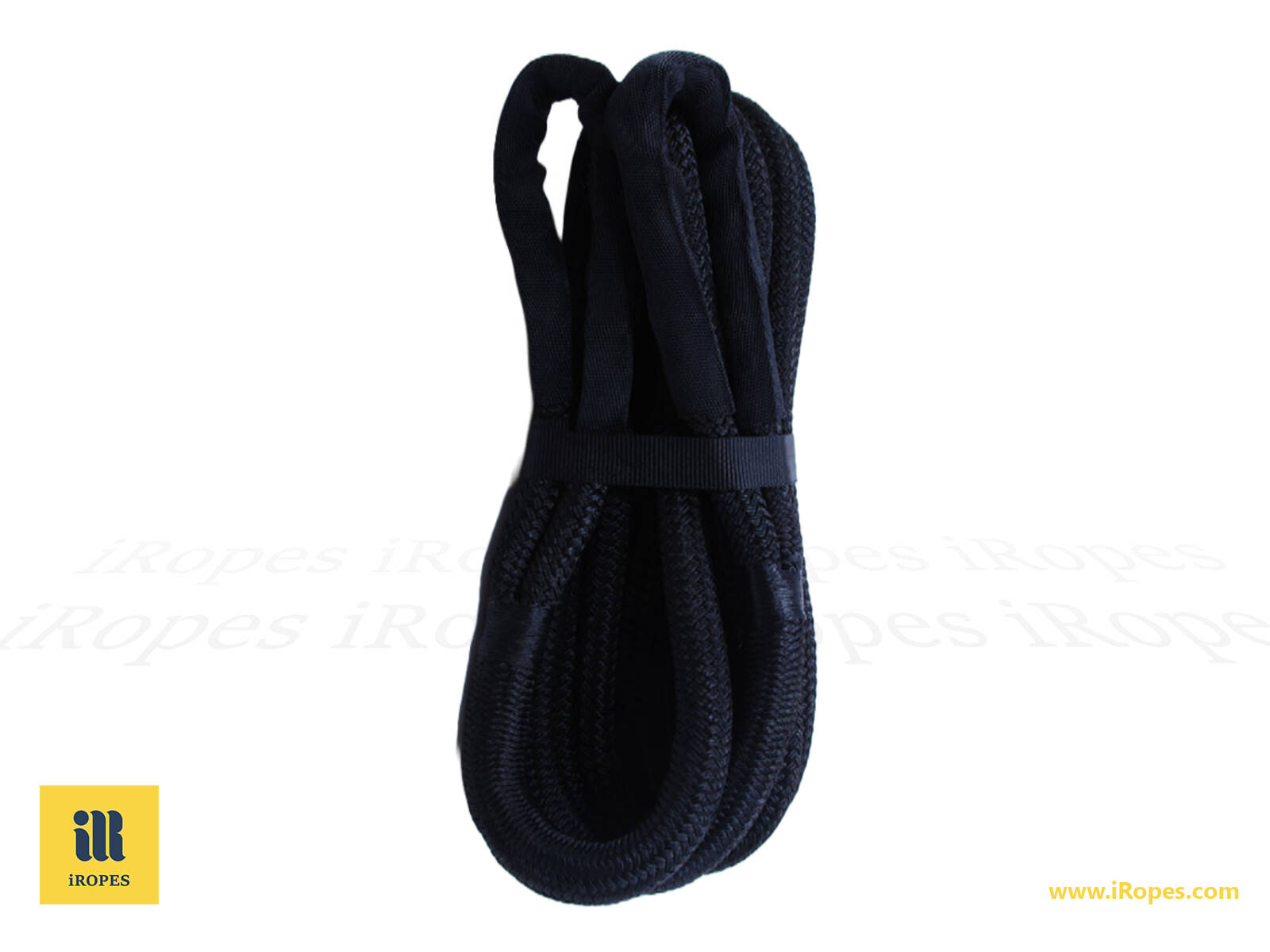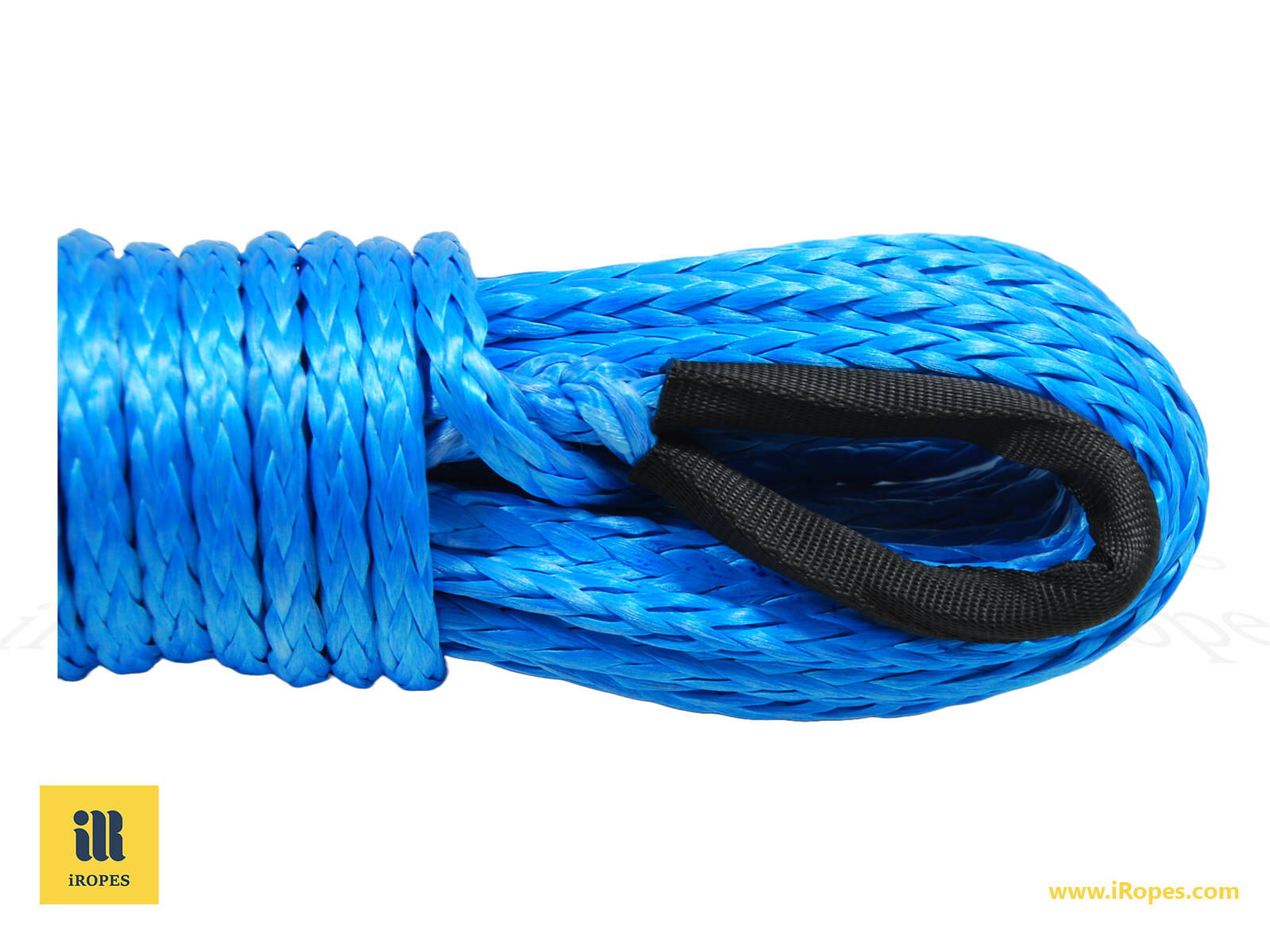In the realm of lifting and rigging, the choice between fiber rope slings and wire rope slings can be as critical as the operation itself. Imagine hoisting a delicate load, only to have it marred by abrasive wire ropes or witness a crucial maritime operation grind to a halt due to corroded, unreliable lines. The solution? Fiber rope slings, a versatile and innovative alternative that is rapidly gaining traction across industries.
From the rugged offshore platforms to bustling construction sites, fiber ropes offer a compelling blend of strength, durability, and unparalleled advantages. With their lightweight and flexible nature, these slings not only enhance safety and efficiency for workers but also provide a gentler grip on delicate surfaces, minimizing the risk of damage to valuable loads.
But the benefits don't stop there. Fiber rope slings are inherently resistant to the elements, defying corrosion and chemical exposure that can compromise the integrity of traditional wire ropes. This makes them an indispensable asset in harsh environments, from marine operations to industrial settings, ensuring longevity and reliability where it matters most.
Comparison of Fiber Rope and Wire Rope Slings
When it comes to lifting and rigging applications, the choice between fiber rope slings and wire rope slings can make a significant difference. Both types of slings offer unique advantages and are suited for different scenarios. Understanding the key differences between them is crucial for ensuring safety, efficiency, and optimal performance.
Advantages and Disadvantages of Fiber Rope Slings
An upgraded version of our successful line of Globe ropes. 24-plait nylon
cover and its specially coated UHMWPE core allow users to strip the cover
off this rope and, adapt it specifically to the existing conditions on board.
MATERIAL: Uhmwpe-nylon
CONSTRUCT: 12 /24x2
ELONGATION: 4.8%
- Lightweight and easy to handle - Fiber rope slings are considerably lighter than their wire rope counterparts, making them easier to maneuver and position, especially in tight spaces or when working overhead.
- Non-abrasive and gentle on surfaces - The soft and pliable nature of fiber ropes allows them to grip loads securely without marring or damaging delicate surfaces, making them ideal for handling finished products or valuable cargo.
- Resistant to corrosion and chemical exposure - Unlike wire ropes, fiber ropes are not susceptible to rusting or chemical degradation, making them suitable for marine and offshore operations, as well as industrial environments with harsh conditions.
- Potential disadvantage: Lower strength and durability - While fiber ropes are strong, they may not match the sheer strength and durability of wire ropes, especially for heavy-duty or prolonged use.
Advantages and Disadvantages of Wire Rope Slings
- Exceptional strength and durability - Wire ropes are renowned for their high tensile strength and resistance to abrasion and wear, making them ideal for heavy-duty lifting applications and demanding environments.
- Crush resistance and load stability - The rigid construction of wire rope slings provides superior crush resistance, ensuring the load remains stable and secure during lifting operations.
- Potential disadvantage: Susceptibility to kinking and abrasion - While durable, wire ropes can kink or fray if not handled properly, leading to potential safety hazards and reduced service life.
- Potential disadvantage: Surface damage and corrosion - Wire ropes can scratch or mar delicate surfaces, and they are susceptible to corrosion if not properly maintained or protected.

Applications and Usage of Fiber vs. Wire Rope Slings
Fiber rope slings are often preferred for temporary work, construction sites, painting jobs, and marine operations where their lightweight nature, non-abrasive properties, and corrosion resistance are advantageous. They excel in applications that require gentle handling of delicate or finished products, as well as in environments where rust or chemical exposure could be a concern.
On the other hand, wire rope slings shine in heavy-duty lifting scenarios, such as handling machinery, equipment, or heavy loads in industrial settings or overhead lifting applications. Their exceptional strength, durability, and crush resistance make them well-suited for demanding tasks where load stability and safety are paramount.
Ultimately, the decision to choose fiber rope slings or wire rope slings depends on factors like the weight of the load, the environment in which the lifting will occur, the surface conditions of the load, and the specific requirements of the application. By carefully considering these factors and weighing the advantages and disadvantages of each type, you can make an informed choice that prioritizes safety, efficiency, and optimal performance for your specific needs.
Advantages of Fiber Rope Over Wire Rope Sling
In the world of lifting and rigging, fiber rope slings are gaining increasing popularity as a versatile and reliable alternative to traditional wire rope slings. While both types of slings have their unique strengths, fiber ropes offer several compelling advantages that make them an attractive choice for various industries.
Non-Corrosive Nature of Fiber Ropes
One of the most significant advantages of fiber ropes is their non-corrosive nature. Unlike wire ropes, which are susceptible to rusting and corrosion when exposed to moisture, salt water, or chemicals, fiber ropes are inherently resistant to these elements. This makes them an ideal choice for outdoor applications, marine environments, and industrial settings where harsh conditions prevail.
Have you ever witnessed the frustration of dealing with corroded wire ropes that compromise safety and require frequent replacements? With fiber ropes, you can bid farewell to such concerns, as they remain unaffected by the elements, ensuring a longer lifespan and enhanced reliability.

Lightweight and Flexible Fiber Rope Construction
Fiber ropes are significantly lighter than their wire rope counterparts, making them easier to handle, maneuver, and transport. This lightweight nature translates into increased efficiency and reduced strain on workers, particularly in scenarios where rigging and positioning are required in tight or overhead spaces.
Moreover, fiber ropes boast superior flexibility, allowing them to conform to the shape of the load being lifted or secured. This attribute not only facilitates easier rigging but also ensures a secure grip on the load, minimizing the risk of shifting or slippage during lifting operations.
Durability and Environmental Resistance of Fiber Ropes
Contrary to the common misconception that fiber ropes are fragile, modern synthetic fiber ropes are renowned for their exceptional durability and resistance to various environmental factors. From withstanding exposure to UV radiation and chemicals to maintaining their integrity in extreme temperatures, these ropes offer unparalleled performance and longevity.
By opting for fiber rope slings, you not only benefit from their durability but also enjoy reduced maintenance costs and fewer replacement cycles, ultimately contributing to a more cost-effective and sustainable operation.
However, it's essential to remember that while fiber rope slings offer numerous advantages, they should always be used in accordance with recommended working load limits and safety guidelines to ensure optimal performance and mitigate potential risks.
- Non-corrosive and environmentally resistant - Fiber ropes are unaffected by moisture, chemicals, and harsh conditions.
- Lightweight and flexible - Easier handling, maneuverability, and secure grip on loads.
- Durable and long-lasting - Withstand UV radiation, extreme temperatures, and other environmental factors.
As you evaluate your lifting and rigging needs, consider the advantages that fiber rope slings offer over their wire rope counterparts. By embracing this innovative solution, you can enhance safety, improve efficiency, and future-proof your operations for a wide range of applications across various industries.
Key Applications and Industries for Fiber Ropes
The versatility of fiber ropes extends far beyond their reputation as trusty tools for the adventurer or weekend warrior. In fact, these rugged yet lightweight ropes have secured a pivotal role across numerous industries, offering unparalleled advantages that make them a favored choice for a wide range of applications.
Marine and Offshore Industries
When it comes to the unforgiving marine and offshore environments, fiber ropes rise to the challenge with their exceptional durability and resistance to the elements. From the mighty forces of the open sea to the corrosive effects of salt water, these ropes remain unfazed, providing a reliable solution for critical operations.
Imagine the intricate web of lines that keep a vessel securely moored, the sturdy hawsers that tow immense loads, or the intricate rigging systems that enable offshore platforms to function seamlessly. These are just a few examples where the strength and resilience of fiber ropes shine, ensuring the utmost safety and efficiency in challenging maritime conditions.

Construction and Manufacturing Industries
On land, the construction and manufacturing sectors have embraced fiber ropes as indispensable tools for their rigorous demands. From towering skyscrapers to massive industrial complexes, these ropes play a crucial role in rigging, lashing, and sling applications.
Can you imagine hoisting heavy equipment or securing loads without the reliable grip and strength of fiber ropes? These versatile workhorses not only ensure the safe handling of materials but also provide the necessary flexibility and shock absorption to protect delicate surfaces and equipment.
Fiber ropes are the unsung heroes of construction sites, quietly ensuring safety and efficiency every step of the way.
Other Common Applications of Fiber Ropes
Beyond the marine, offshore, construction, and manufacturing realms, fiber ropes have found their way into a myriad of other applications, showcasing their versatility and adaptability.
From the rugged terrain of outdoor adventures, where they provide a reliable lifeline for climbers and hikers, to the serene landscapes of gardening and landscaping, where they lend their strength and flexibility to secure plants and structures, fiber ropes have become an indispensable tool across diverse settings.
Have you ever witnessed the intricate craftsmanship of fiber ropes in the hands of skilled artisans, woven into beautiful and functional pieces? Or perhaps you've appreciated their utility in securing loads during transportation or in the rigging of various set-ups for events and productions.
The possibilities are endless, and as industries continue to evolve, fiber ropes stand ready to adapt and conquer new frontiers, offering their unique blend of strength, durability, and versatility to support human endeavors wherever they may lead. For those interested in broadening the scope of these applications, the versatility of synthetic jute rope and jute cord is another worthwhile consideration.
Discover the Best Sling Option for Your Needs
Choosing between a fiber rope sling and a wire rope sling is crucial for ensuring safety and efficiency in lifting applications. Fiber ropes excel in lighter weight, flexibility, and resistance to corrosion, making them ideal for construction, maritime, and industrial environments. While the wire rope sling offers exceptional strength and durability for heavy-duty tasks, fiber ropes provide a versatile, non-abrasive alternative. Consider the specific needs of your job to select the best rope wire sling for optimal performance and worker safety. Fill out the form above to learn more or get expert guidance.